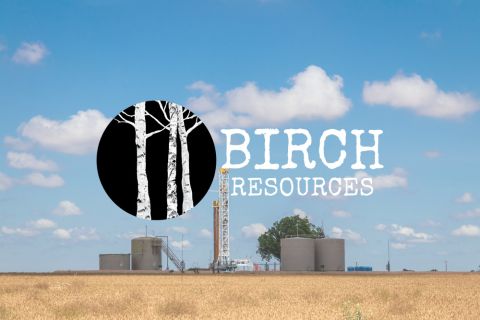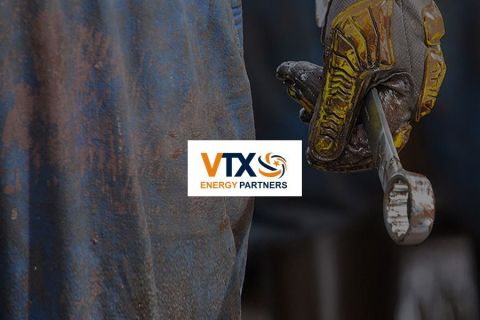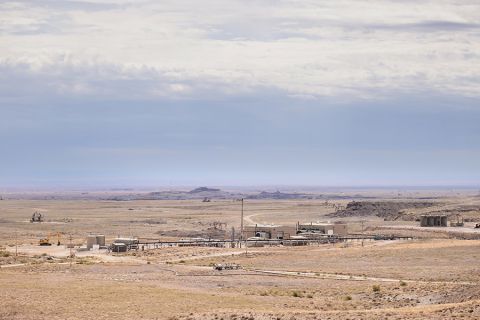
(Source: Hart Energy)
The scourge of the oil and gas pipeline industry is summed up in one word: leaks. In recent weeks two of North America’s leading pipeline operators—TC Energy Corp. and Energy Transfer LP—have signed onto an industry-wide partnership focused on developing new technologies to prevent and detect pipeline leaks.
Members of the Intelligent Pipeline Integrity Program (iPIPE) also include Enbridge Inc., DCP Midstream LP, Equinor ASA, Hess Corp., Oasis Midstream Partners LP, ONEOK Inc., Marathon Petroleum Corp., Goodnight Midstream LLC and Whiting Petroleum Corp.

“The addition of major players such as Energy Transfer and TC Energy signals industry’s continued interest in looking over the horizon for every tool possible to operate pipelines with zero spills,” said program manager Jay Almlie, who also serves as principal and engineer, mid/downstream oil and gas lead for the Energy & Environmental Research Center (EERC), a contractual organization which operates out of the University of North Dakota in Grand Forks, N.D.
In an interview with Hart Energy, Almlie said the impetus for iPIPES was the dramatic growth created about 10 years ago by the “Bakken boom,” even though North Dakota has produced crude oil since 1951. With the boom, extensive new gathering infrastructure, spreading over approximately 15,000 square miles, was installed to match the rapid spread of oil wells throughout western North Dakota.
“We simply didn’t have the infrastructure that Texas and other oil giants had. With rapid growth came growing pains. In 2015, North Dakota was mentioned in far too many media articles about pipeline spills,” Almlie explained.
Governor Interceded
In May 2017, Gov. Doug Burgum asked every pipeline operator with assets in North Dakota to engage with him in a daylong conversation about pipeline spills. Burgum stated the obvious—that neither he nor the companies contributing to North Dakota’s rapid oil growth wanted pipeline spills to be part of their legacy.
They discussed pathways to reverse the trends of pipeline spills in the state and negative messages on pipelines expressed widely in media, Almlie recalled.
That meeting came just after several high-visibility spills in North Dakota and on the heels of the Dakota Access Pipeline protests that received extensive media coverage. Burgum’s message to the industry was, “We are moving toward an era of zero tolerance for pipeline leaks,” strongly suggesting that industry could apply technology to overcome many of the challenges of improved pipeline safety.
(Although North Dakota has not been immune to gathering pipeline leaks, a 2015 analysis commissioned by the state Legislature concluded that its track record on gathering pipeline spills was very similar to that of other major oil-producing states, including Texas, New Mexico, Oklahoma and Colorado.)
Several industry leaders had been thinking along similar lines and floated the idea of fostering development of new tools leading to continuous improvement of pipeline operations. Although the industry agreed with the political motivations for achieving zero leaks, they also saw the financial motivation as leaks cause lost revenue and cost millions of dollars to clean up.
Almlie said industry leaders proposed a program to foster the creation of new technology, especially for narrow-diameter gathering pipelines. Their plan was presented to the North Dakota Industrial Commission, which was asked for cost-match funding for promising projects. By May 2018, iPIPE was up and running as a multimillion-dollar program that Almlie was hired to manage.
The program has evolved into a national program as each program member has pipeline assets outside of North Dakota, so whatever technologies are developed in North Dakota will help them operate their pipelines elsewhere. One member, DCP Midstream, has no assets inside of North Dakota. In 2019, iPIPE activities were also conducted in New Mexico.
For 2020, Almlie said the group will consider development sites in North Dakota, Colorado, Texas, Oklahoma, Saskatchewan and Alberta. “This demonstrates the reach of this program and its potential to impact safe pipeline operations across the country and across the globe,” he said.
Development Selection
The iPIPE program staff continuously scouts emerging technologies and last year 65 companies deemed to have promising technology were invited to submit proposals. The group’s technology selection committee (TSC), comprised of one expert from each member company, reviews the proposals, then receives presentations from each screened proposer during a two-day annual event conducted similar to the TV program Shark Tank. The TSC selects the technologies for investment and directs its program manager, the EERC, to contract with each selected company for mutually negotiated development activities.
The EERC also serves as iPIPE’s objective technology evaluator. By assigning the independent evaluator role to the EERC, members feel they can confidently stand behind the program results, Almlie said. Nor is iPIPE the typical consortium where members do little other than pay to have someone else do the work. As they own the program, members select technologies for investment, volunteer live pipelines for development efforts, and contribute labor and materials.
“Additionally, members have expressed surprise at the amount of information sharing this program [as a forum] offers. Several have stated that they have no other forum like this that facilitates sharing of challenges, successes and failures,” Almlie said. Members are discussing how to wring even more out of the program.
Within the halls of several member companies, iPIPE is receiving intense positive attention. “TC Energy is committed to operating the safest asset base in North America, using technology and advanced analytics to achieve that goal,” said Leslie Kass, executive vice president of the Technical Center for TC Energy.
While iPIPE was initially focused on liquids-gathering pipelines, members have expanded the scope of the program to include gas-gathering pipelines. DCP Midstream and ONEOK are primarily gas pipeline operators. Equinor, Hess and Whiting also operate their own gas-gathering systems. As a result, the latest technology selection event included proposals on gas pipeline leak detection.
Progress Includes Meeting Challenges
Work at the bleeding edge of technology always presents challenges but also provides the most opportunities. Almlie defined specific challenges facing iPIPE:
- “Adoption of new technology, even when proven, requires champions within companies. Human nature is to accept the tried and true and to be skeptical of the new. The same can be said of the regulatory agencies that sometimes present unintentional hurdles to adoption of new technologies.”
- “Many of the bleeding-edge technologies we are investigating employ Big Data and artificial intelligence. Collecting, storing, and processing these large quantities of data can be challenging.”
- “Promising remote-sensing technologies are somewhat hampered by our current regulatory environment. Satellite imagery is limited in resolution not by the sensors, but by national security concerns. Drone-based sensors could provide enhanced spatial resolution but are severely limited by Federal Aviation Administration regulations that prevent flight beyond visual line-of-sight.”
- “While pipelines in warmer climates are closer to the surface or lay upon the surface, pipelines in cold climates are buried 6-20 feet below the surface to make them less susceptible to effects of frozen ground. This makes any form of leak detection more challenging.”
Gathering pipelines themselves offer unique challenges. Transmission pipelines are generally large in diameter, traverse a linear route, and constantly flow in one direction only. Gathering pipelines, on the other hand, are small-diameter pipes forming complex networks that interconnect numerous well sites to the marketplace. Gathering lines flow only when product is available and sometimes flow “backward.” Some remain filled with gas and liquids, but some experience what is termed “slack,” meaning that they are not constantly filled with fluids.
“All of these factors result in the need for unique technologies designed specifically for employment in gathering pipelines. Having said that, some of the technologies developed for gathering pipelines may also hold promise for interstate transport pipelines and distribution pipelines as well,” Almlie said.
Early Successes
Beyond an expanding membership, which Almlie said demonstrates companies’ validation of the program, iPIPE claims early success in technologies it has helped to develop. In May 2018, the first two technologies were selected for development—Satelytics’ Constant VigilanceTM and Ingu Solutions’ PipersTM. Following development activities that refined these two products, multiple members of iPIPE began commercially contracting with these two technology providers. Additionally, he said word of the iPIPE successes spread, which assisted both companies in expanding their commercial reach beyond iPIPE members.
Almlie also pointed out that iPIPE has no intention of competing with established leak detection/prevention businesses.
“Our job is to foster development of new technology, not to offer it commercially,” he said. “iPIPE members generally have no interest in the intellectual property of the companies with whom it contracts. iPIPE members simply want new tools in their toolbelt … they do not wish to invent and manufacture the tools themselves.”
For information on iPIPE contact program manager Jay Almlie or visit undeerc.org and ipipepartnership.com.
Recommended Reading
Matador’s U-lateral Delaware Tests Outproduce 2-mile Straight Holes
2024-10-30 - Matador Resources' results from eight Loving County, Texas, tests include two 2-mile U-turn laterals, five 2-mile straight laterals and one 1-mile straight lateral, according to state data.
Hot Permian Pie: Birch’s Scorching New Dean Wells in Dawson County
2024-10-15 - Birch Resources is continuing its big-oil-well streak in the Dean formation in southern Dawson County with two new wells IP’ing up to 2,768 bbl/d.
VTX Energy Quickly Ramps to 42,000 bbl/d in Southern Delaware Basin
2024-09-24 - VTX Energy’s founder was previously among the leadership that built and sold an adjacent southern Delaware operator, Brigham Resources, for $2.6 billion.
Now, the Uinta: Drillers are Taking Utah’s Oily Stacked Pay Horizontal, at Last
2024-10-04 - Recently unconstrained by new rail capacity, operators are now putting laterals into the oily, western side of this long-producing basin that comes with little associated gas and little water, making it compete with the Permian Basin.
Comstock: Monster Western Haynesville Wildcats Cost $30MM-plus
2024-10-31 - Comstock Resources is flowing back a 13th well currently in the play where the oldest has made 2.2 Bcf per 1,000 lateral feet to date in its first 29 months online.
Comments
Add new comment
This conversation is moderated according to Hart Energy community rules. Please read the rules before joining the discussion. If you’re experiencing any technical problems, please contact our customer care team.





